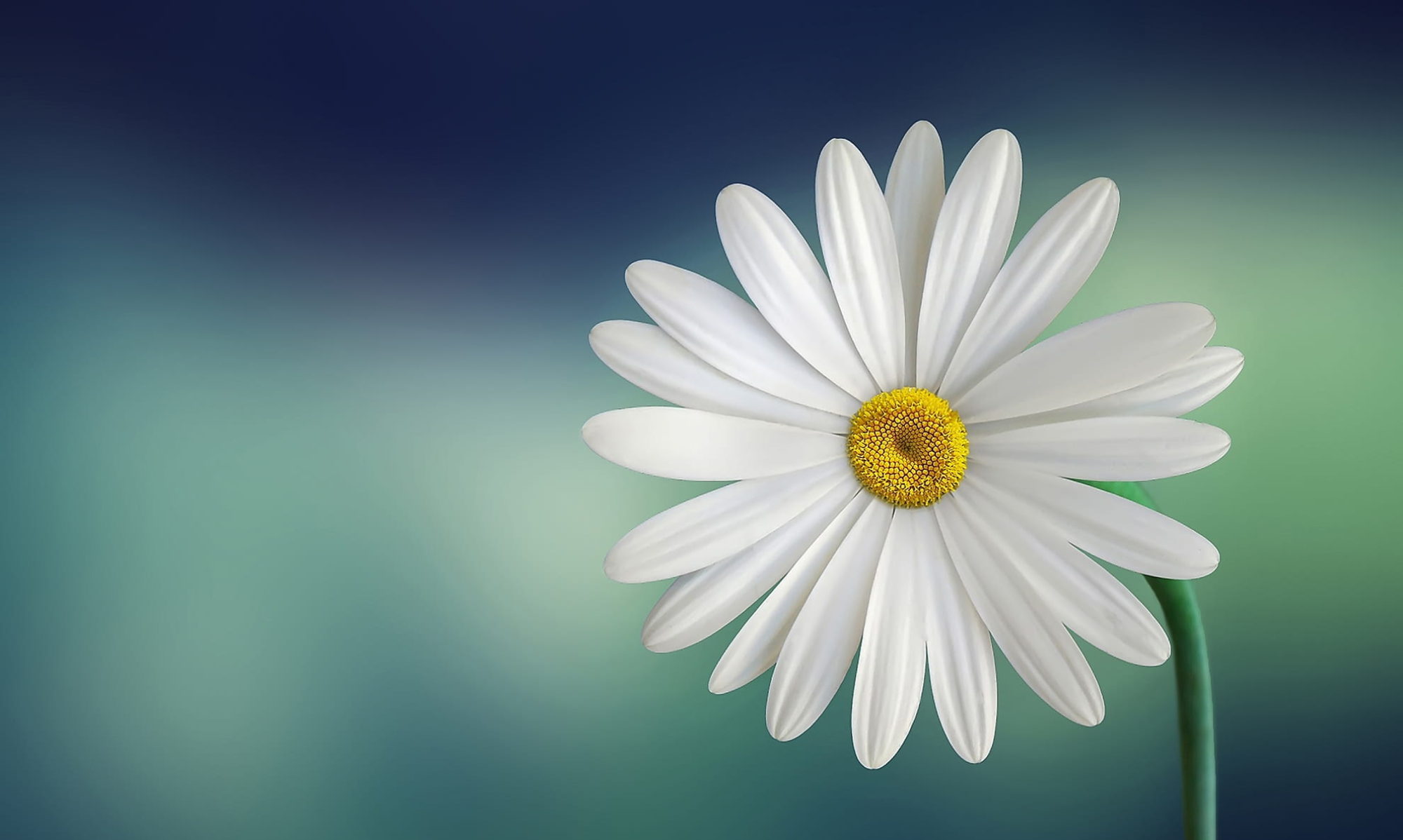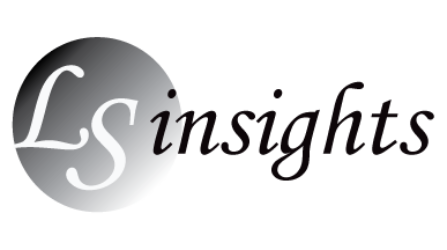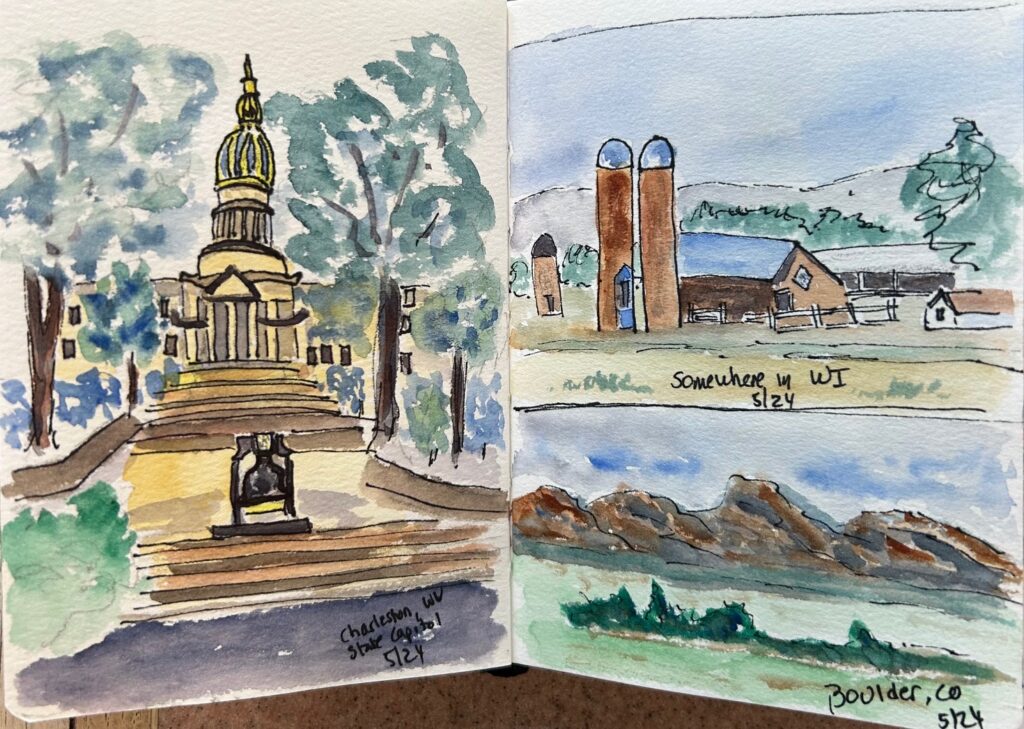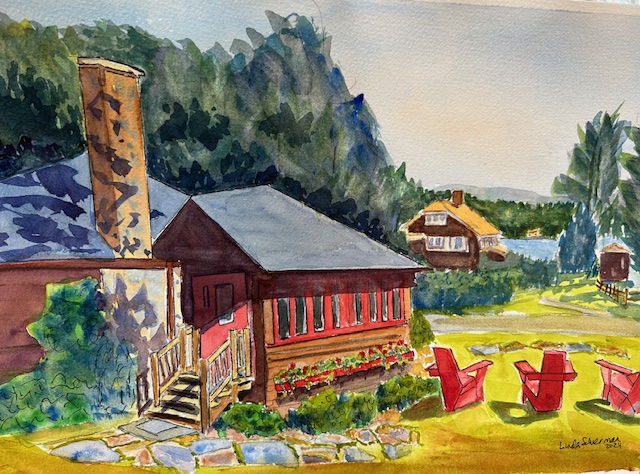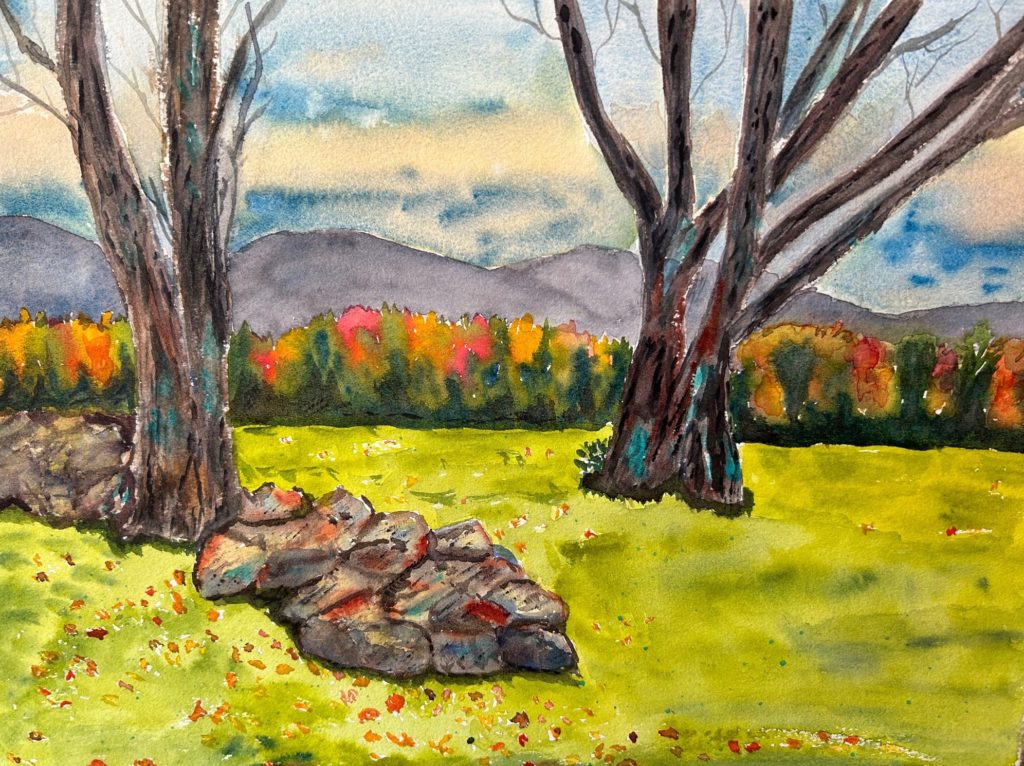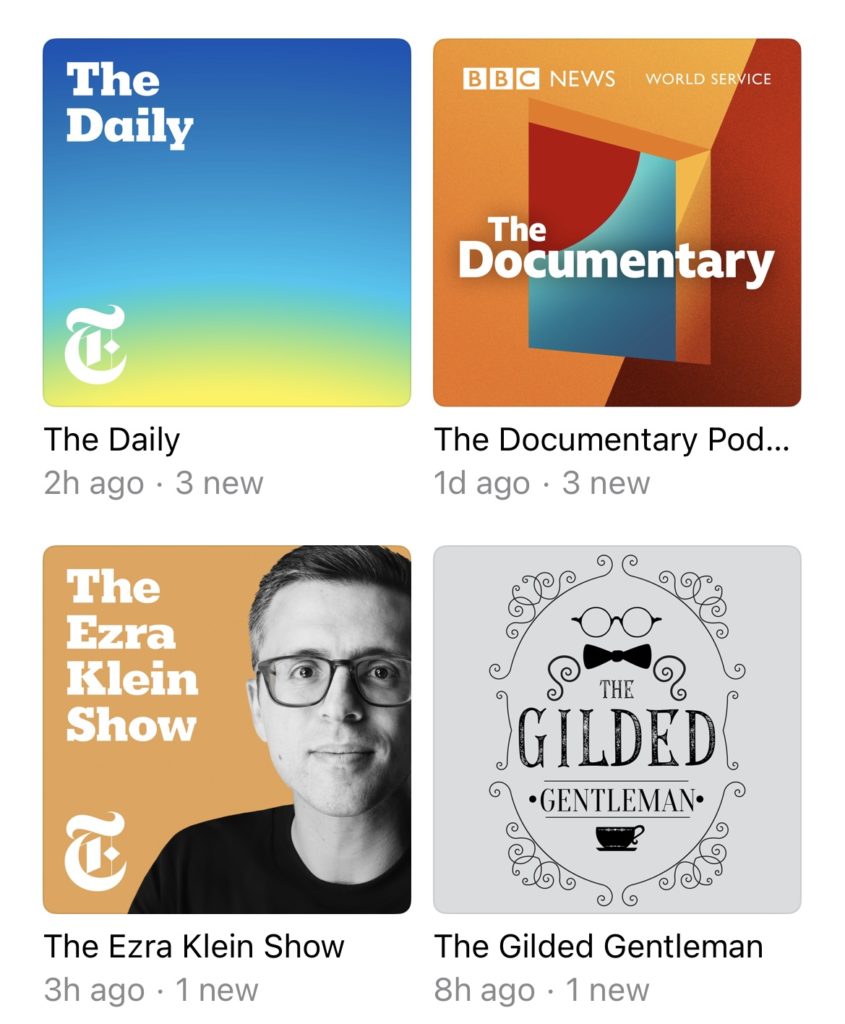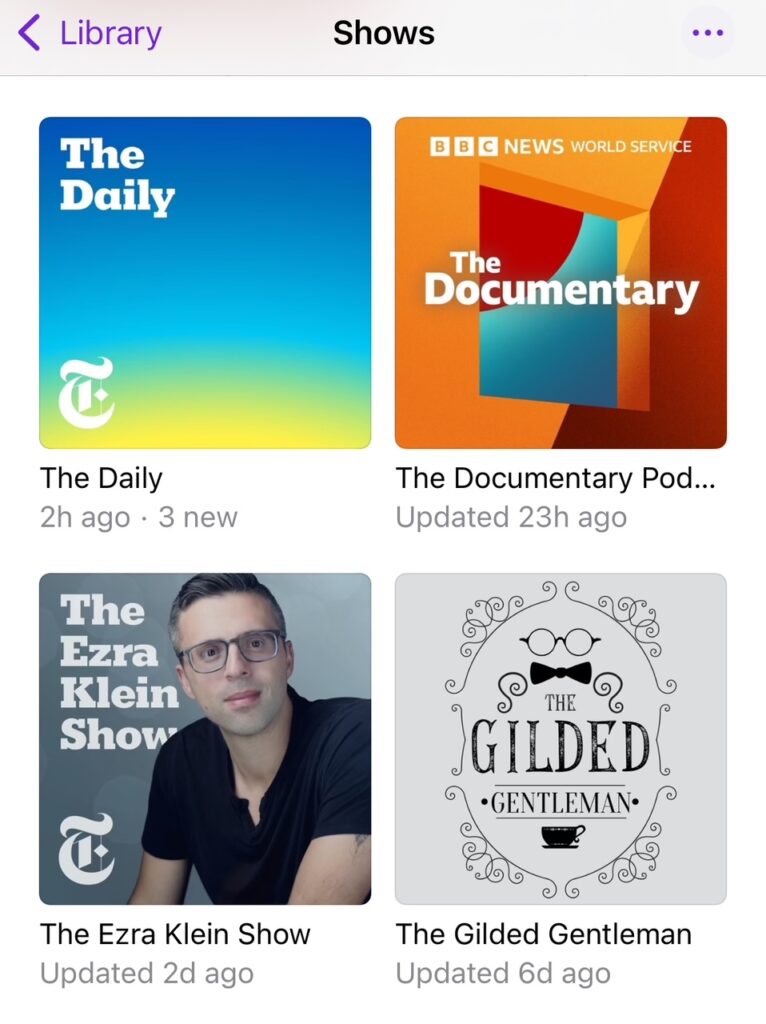
There are more podcasts than ever. I’m often asked for podcast suggestions since I subscribe to many, of all stripes. As I’ve done since 2020, I’ve reserved my August blog for my recommended podcasts.
As you embark on your August vacation and want to start listening to podcasts, or update your own library, please see my latest list, which includes repeats from years’ past as well as some new ones. (Links to my previous lists are at the end of this post.) This is a small subset of the 126(!) podcasts I subscribe to. Of these, I probably listen to 20 episodes a week.
If I’m walking, I tend to listen to them at 1.5 speed. If I’m driving or cooking, I don’t change the speed. There are no embedded links since everyone uses a different source to download podcasts.
Note: I’ve asterisked (*) those that are new this year.
General Interest/News/Politics
*The Political Scene (from the New Yorker): this is a brand-new podcast for me, so I haven’t listened to that many episodes. I include it because of how much I respect Susan Glasser, Jane Mayer and Evan Osnos. A good one to know if you want insightful political analysis.
*The Meidas Touch: the popularity of this left-leaning podcast rivals that of Joe Rogan, so I started listening to it. It comes out several times a week – too much for me. But I do look at its topics to decide if I want to listen. It’s an important, influential podcast, so that’s why I’m flagging it.
Carnegie Connects: This is the podcast of the Carnegie Endowment of International Peace. It is hosted by the well-respected Aaron David Miller (a friend of mine), who tackles pressing foreign policy issues in conversations with journalists, policymakers, historians and experts. I value the measured, intellectual approach to current events.
Impolitic with John Heilemann: John Heileman is one of the most articulate and witty political analysts I know of. He gets the best and brightest guests. It’s worth listening to if you need a politics fix.
On with Kara Swisher and Pivot with Kara Swisher and Scott Galloway. I revere Kara Swisher, the most badass interviewer I know. She has two podcasts. The first is hers alone. The second is hosted by both Kara and NYU professor Scott Galloway and covers politics and technology’s influence on our society. Both podcasts offer sharp analysis while being very entertaining.
The Ezra Klein Show: I appreciate the deep thinking of Ezra Klein, who provocatively addresses a variety of topical issues, from anxiety to climate change to politics, in an interview format in this New York Times podcast.
Fresh Air: Many people know this podcast and its host, Terry Gross. She and Tanya Mosley, her relatively new co-host, are great at their one-on-one interviews with a wide range of interesting people.
IA from WAMU: This show took over for Diane Rehm’s daily radio show on WAMU, Washington DC’s NPR station. It covers interesting, wide-ranging topics, so I often check to see if there are episodes of interest.
The Assignment with Audie Cornish. Audie Cornish was a wonderful anchor of NPR’s All Things Considered, and left to start this podcast, among other things. The Assignment examines people living in the headlines and I just like her approach. I miss her on NPR, so this is how I get my fix.
The Daily: The New York Times came out with this podcast a few years ago, and it always covers a topic in the news in a really engaging way. If you miss hearing it on the radio, it’s always worth checking out what Michael Barbaro and his colleagues are covering.
The Documentary by BBC News. This podcast provides in-depth treatment of a variety of international issues in a refreshingly non-US centric manner. Each podcast covers one topic. I got hooked after listening to several episodes focused on the Ukraine war – from both the Ukrainian and Russian side.
Think with Krys Boyd: I discovered this NPR radio station (KERA) in Dallas’ podcast by accident many years ago. I think host Krys Boyd is among the best interviewers out there. This is sometimes focused on Texas topics, but most often on issues of national importance and interest.
Pop Culture
*IMO with Michelle Obama and Craig Robinson: I like getting to know these siblings as siblings. But I also appreciate and value their insight on a lot of issues, especially Michelle’s. She’s just incredibly wise, and so is her brother. They interview great folks. I especially like the episode with Barack Obama.
*Las Culturistas: My daughter introduced me to Bowen Yang and Matt Rogers’ podcast. It’s a little too much banter for me, but they interview enticing people, and I just love Bowen Yang.
*The Best People: Nicole Wallace’s new podcast is great. She’s an incredible interviewer and so smart, and you learn about her in how she talks to her guests. I highly recommend this one.
*Formula 1: It’s a long story, but I’ve become a big fan of Formula One after watching Netflix’ Drive to Survive. Here are two shows I really like: F1 Beyond the Grid and FI Explains.
Awards Chatter: This is one of the Hollywood Reporters podcasts (and my favorite). The host, Scott Feinberg, is a great interviewer of famous folks, most of whom are up for one of the big award shows, like the Academy Awards, Tony’s or Grammy’s. It’s very entertaining and well researched. Go back to previous episodes – he’s interviewed everyone! [Two other podcasts from THR include: It Happened in Hollywood and Behind the Screen.]
Even The Rich: This podcast provides a comical view of a range of rich figures or families. They’ve covered the Royal Family, Will Smith, Jay Z and Beyonce, Princess Diana, Madonna, the Murdochs and more. It’s a light but well researched take on these folks.
Wiser Than Me with Julia Louis-Dreyfuss. Thanks to my friend Janet, who introduced me to this podcast by the amazingly talented Seinfeld and Veep star Julia Louis-Dreyfuss. Each episode focuses on a different famous woman in her 80s or 90s, who share their life story and wisdom with Julia, who then discusses what she’s learned with her own mom. It’s engaging and heartwarming.
On the Media. This NPR podcast is also a weekly radio program, but I’ve started listening to it since I often miss its regular Saturday at 7 am broadcast (on my local NPR station). Each week explores how the media treats an issue, and I find its approach and what it covers riveting.
Podcasts based on TV shows
*Are you a Charlotte: For Sex in the City fans, Kristin Davis has a new podcast that reviews each episode of Sex in the City through interviews with folks that were involved in the show.
*Northern Disclosure: Rob Morrow and Janine Turner, who starred in the tv series Northern Disclosure, interview those involved in an episode-by-episode format.
The Official Hacks Podcast: This podcast goes through each episode on the later seasons of the HBO Max series, Hacks, which I adore.
The Official Gilded Age Podcast: If you love HBO’s Gilded Age tv series, this is the podcast for you.
And Just Like That: The Writers Room: if you are a fan of “Sex and the City” and the recent series “And Just Like That,” you’ll appreciate this podcast, which speaks to the writers, actors and others involved in making the latest series.
Personal Finance/Business/Retirement
The Long View: One of the hosts of this Fidelity Investment’s podcast is Christine Benz, who is a well-known Fidelity Investment analyst. It covers a lot of investing topics that I’ve found to be informative and interesting.
Her Money with Jean Chatzky: This is the only show I listen to religiously. Jean Chatzky is known to many audiences for the financial advice she provides in a friendly, nonjudgmental, and well researched manner. This show covers a range of topics related to women and money. I always feel empowered after I listen to Jean, who’s enthusiastic and encouraging regardless of how financially knowledgeable one is. Men should feel welcome to listen too.
Jill on Money: Jill Schlesinger takes questions on personal finance issues and provides her advice as a Certified Financial Planner.
The Retirement Answer Man: This is a weekly podcast covering retirement planning from various angles but mostly focused on personal finance.
Cooking/Food
The Splendid Table: This is a very entertaining, light show that has great interviews, information and recipes. When I’m stressed, I love to listen to Frances Lam’s gentle voice as he takes on a range of food topics.
A Taste of the Past: This looks at the history of food-related topics.
History
*Dan Snow’s History Hit: This Dan Snow is not my husband but a well-known British historian, who covers a wide range of fascinating moments and trends in history. Highly recommended for history lovers.
American History Tellers: This podcast does deep dives into different historical subjects. Among the interesting ones this year have been Lewis and Clark, Presidential first ladies, the Progressive Era and Typhoid Mary.
For the Ages: A History Podcast: This is the podcast from the NY Historical Society, and is hosted by David M. Rubinstein, the co-founder of the Carlyle Group, former head of the Smithsonian and new owner of the Baltimore Orioles baseball team. He interviews historians on a range of topics related to American history. He has a humorous interview style, making this an entertaining podcast.
Listening to America: Noted historian Clay Jenkinson (who also was an expert on my 2019 Smithsonian’s Thomas Jefferson’s North Dakota tour) is an expert on Jefferson, both Roosevelts, John Steinbeck, and Ernest Hemingway, among many others. He’s currently retracing Lewis and Clark’s journey across America in his Air Stream trailer. He’s just incredibly informative and interviews a lot of knowledgeable and interesting historians and others about America and American history. Look for him in many of Ken Burns’ documentaries.
The Bowery Boys: New York History: I love this very informative podcast with historians steeped in everything having to do with New York City. I learned about it when listening to the Official Gilded Age Podcast above. A related podcast is the Gilded Gentleman, which I also recommend.
Dressed – The History of Fashion: I am a fashion and history buff, so this is a perfect podcast for me. The two hosts are fashion historians that cover a range of fashion topics that usually relate to current times.
Rachel Maddow’s Deja News and Ultra. I’m a huge Rachel Maddow fan and will listen to anything she does. Her deep research shows her Ph.D chops and brings important historical salience to our current political environment.
Stuff You Missed in History Class: This covers historical events or figures that most of us have never heard of. I loved the one about the 1918 Flu, which was produced years before the current pandemic.
Jewish-themed podcasts
*Being Jewish with Jonah Platt: Jonah Platt is an actor/activist, and Ben Platt’s brother. He interviews a range of folks on Jewish issues or their background and doesn’t favor one point of view or leaning over any other. He’s knowledgeable and fair.
*Jewish History Nerds: this podcast is true to its title. It’s literally two nerds who dig deep into Jewish history, but in a light-hearted, entertaining way.
Unholy: Two Jews on the News: The two Jews referred to are journalists, one in Israel and one from The Guardian in London. Through their own opinions as well as interviews with well-known journalists and politicians, they provide their take on the latest developments on life and politics in Israel, the US, the United Kingdom and around the world. This is apparently the go-to podcast for many well-regarded US journalists and is more diverting than one might expect.
Identity Crisis: This podcast is from the Hartman Institute, an internationally respected Jewish organization. I enjoy host Yehuda Kurtzer’s perspective and interviews with leading thinkers that help unpack current issues affecting Israel and Jews around the world.
Miscellaneous
Chasing Life with Sanjay Gupta. Many know Dr. Sanjay Gupta from CNN. He brings his own life and experience to each episode, which I find helps me relate to whatever he covers. He tends to focus on a single topic each season.
A Certain Age: this podcast deals with a variety of issues that women my age and older deal with.
Learn to Paint: this podcast host interviews artists, working in various media, to discuss their approach to art. Inspiring for painters like me.
WorkLife with Adam Grant: An organizational psychologist, Adam Grant dives into the keys to creating a better work life.
Listening to podcasts makes everything I do more enjoyable — whether walking, cooking, painting, cleaning, driving or looking for inspiration. I hope you find some new ones to listen to. No doubt I’ll have a fresh list next year. Enjoy the last weeks of Summer!
Previous Lists:
Note: many of the podcasts removed from previous lists are because they are no longer active or are not as relevant, not because I don’t still recommend them. Many are likely still available.
